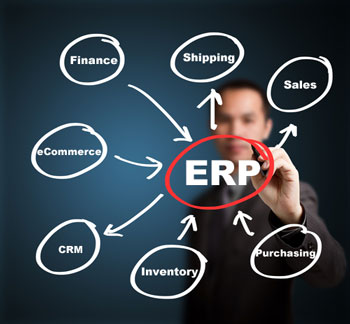SaaS As An Alternative To ERP For Transaction Processing?

Many companies are starting to turn to enterprise resource planning (ERP) initiatives to help streamline their supply-management, B2B invoicing and other business operations. Shoe distributor RT Nash, for example, recently deployed such a new, more efficient cloud-based system to send a receive sales orders and invoices.
In a recent blog post, Joshua Morrison, whose company Tradeshift operates a cloud-based transactional business, noted that ERP software is becoming more common for handling transaction processing, specifically within accounts payable and purchasing. “Many U.S. companies have made significant capital investments in corporate [ERP] software to manage these transactions and look to leverage the ERP as much as possible to maximize the value from their associated sunk costs.
While acknowledging why they do so, given that the average ERP implementation across all industries costs nearly $10 million, and even more for manufacturers where the average costs reach almost $11.5 million, he suggested they could benefit from using a third party’s cloud-based software as a service (SasS) to support their transaction processing.
“There remains not only a heavy reliance on company ERP platforms for transaction processing, but a high cost to manage the platforms and to change providers as well,” he noted. “While processing financial transactions directly within the ERP was once considered the best solution to centralize company data, many businesses now struggle to maintain their ERPs to stay current with release updates and patches, as well as take advantage of best practices and new technologies in the industry.”
Moreover, Morrison noted, as business becomes more global and geographic restrictions continue to dissolve, “it becomes more imperative for businesses to employ a solution that will provide a consistent, controlled, cost-effective, and fluid approach to managing financial transactions. This is where SaaS can help.”
In his own ZDNet commentary responding to Morrison’s “hybrid approach,” technology consultant Joe McKendrick notes he raises points worth considering as companies weigh what enterprise applications to run in-house versus off-site. “Morrison proposes a hybrid approach that leave analysis and reporting work in on-premises ERP systems, and offload transaction processing to a [SasS] provider,” he said. “Cloud offers a lot of functionality for small to medium-size businesses that usually can’t handle the costs of ERP systems. This may not involve sensitive, internal corporate financial data, but data that is shared between trading partners.”
Morrison contends SaaS will not replace the ERP. Instead, it would complement it through the integrated exchange of transactional data to feed ERP and support enterprise planning, reporting, and analytics.
“Remember planning, reporting, and analytics? This is what ERP was intended to do, not to handle transaction processing!” he wrote. “Knowing this, major ERP providers are taking steps to move into the cloud SaaS space through acquisition and portfolio expansion. However, I expect that they will be slower to adapt to customer demands and bring new deliverables to market given their large and segmented structures.”
There has been, however, a significant increase of third-party SaaS provider offerings to address this space, Morrison wrote. “It is becoming a best practice to migrate the processing of financial transactions with supply chain partners outside of the ERP and into the cloud, he said.